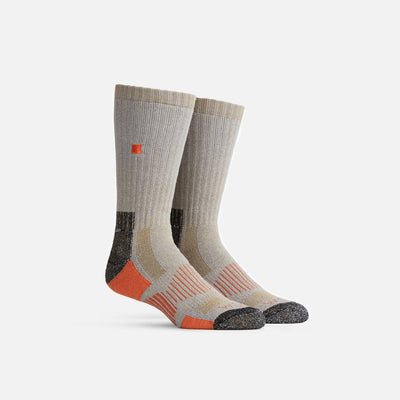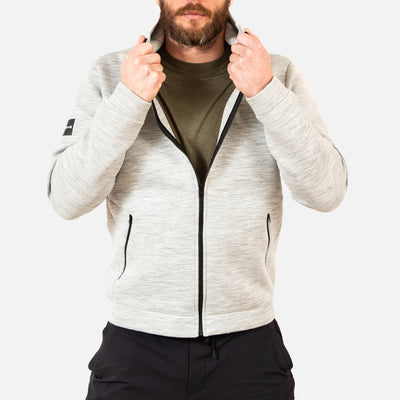The Environmental Impact of Wool Farming

Wool socks are the best socks, and not just because wool socks perform so well. We also strongly believe that wool is the superior choice for the environment.
Some readers may have doubts about this claim. After all, it’s now common to hear that the livestock industry is one of the biggest sources of global environmental degradation. That may be true, but it’s largely to do with the billion cattle raised worldwide for meat and dairy. Wool is something completely different: an environmentally-friendly and sustainable resource.
Sheep thrive on poor soil and in rough terrain, land that cannot easily be used for other types of agriculture. Sheep farming has been an integral part of rural economies for millennia, the very definition of sustainability. In some areas where traditional wool production has lately declined, governments use now sheep for “conservation grazing” to manage and preserve vulnerable ecosystems.
Sheep only contribute a minuscule percentage of the global livestock industry’s total greenhouse gas emissions. The United Nations has estimated that livestock supply chains contribute 8.1 gigatons of carbon dioxide (and equivalents) to the atmosphere – but that’s mostly cows. Sheep are responsible for a mere 3% (PDF), and only a minority of that can be attributed to the wool trade.
Even so, sheep do emit greenhouse gasses, primarily by belching methane up into the atmosphere. So, you would expect wool to have a far larger carbon footprint than a plant like cotton, right? Well, you be the judge: a single cotton t-shirt has been estimated to create 4.3kg of greenhouse gasses, while a wool sweater comes in at 18.5kg. So how does wool win? For one thing, a sweater uses twice as much material as a shit. Wool garments also require significantly less washing than cotton. But here’s the biggie: the average shirt gets used about 22 times – but the wool sweater gets used 109 times. Add it up, and the sweater has about half the climate impact.
It looks even better if you consider that in many flocks, wool is actually a byproduct. Sheep that are raised for milk or meat still need to be sheared, and the resulting wool is a pure bonus for the farmer. That makes wool a textile with an arguably immaterial carbon footprint: those sheep would have been out burping in their pastures even if they weren’t covered in wool.
Wool textiles are extremely durable and long-lasting - they can even be recycled! It turns out that garment lifetime is the most significant determinant of the environmental impact of clothing, meaning that the longer your wool socks outlast cotton or synthetic alternatives, the bigger the sustainability gap gets.
Shepherds in Australia, the source of most of the world’s merino wool, are at the forefront of the regenerative grazing movement, an effort to manage flock rotation to encourage biodiversity, carbon sequestration, and soil recovery. Advocates are showing that large flocks of sheep can be valued contributors to robust ecosystems.
You couldn’t say the same of the cotton plant. Cotton farming is responsible for an absurd amount of freshwater and chemical usage. Despite only using 3% of the world’s arable land, cotton accounts for 24% of the world’s insecticides and 11% of its pesticides. Sheep, by contrast, munch wild plants in natural pastures, with no need for such chemical hanky-panky.
Because wool is a natural product, it won’t do any harm to the environment even if it’s disposed of improperly. That’s not the case with more than half of your clothing. Microfibers from your laundry – tiny pieces of plastic that shed from synthetic garments – wash into the water table and the ocean, getting into the food chain and just about everywhere else. No such problem with wool, which decomposes naturally.
It’s not just us wool-lovers that feel this way – many people that care deeply about sustainability have come to the same conclusion. For more, we encourage you to read our dissertation-length smackdown of cotton’s colossal environmental footprint.
Choose wool socks. The planet (and your feet) will thank you.
















